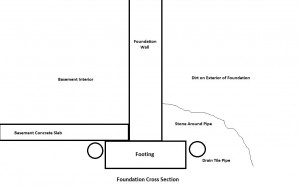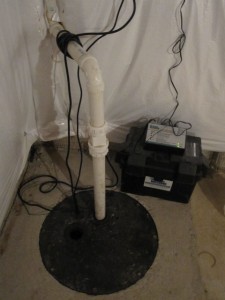Reader Question: How to deal with high water table with basement?
0 Comments | Posted by armchairbuilder in Owner-Builder
Reader Question:
We moved into our Wyoming home two years ago and we were told the home might have a ground water issue. We added a sump pump into the existing sump crock in our finished basement. The pump cycles every ten seconds, especially in the spring but this year due to extra precipitation it continues to cycle frequently through summer and into the fall. Should we be concerned about issues with the high ground water table and could it cause major damage to our foundation?
Armchair Builder Response
Hello, Michael here. I like to answer these questions as if it were my own home. So, the cycle rate of your sump pump is way too frequent which leaves the pump exposed to overheating which can lead to a failure. Sump pump failure is obviously a big problem if you have a finished basement. Even if you didn’t have a finished basement a failed pump could damage expensive mechanical equipment such as furnaces, water heaters…etc. To solve the issue, you might start by putting in a higher capacity pump in place of the existing pump. If that doesn’t slow the cycle time, I would look to add another sump pit in one of the closets on an outside wall, hopefully as far away from the current pit as possible (this comes in handy if for some reason your foundation drain system gets clogged). The drain discharge pipe could then be run up and through the outside wall above the foundation and discharged as far away from the home as possible.

Regarding damage to your concrete slab floor from rising water tables…I have personally never seen this happen before. Most basement floors have a minimum of 4″ of stone below the concrete slab. This stone allows water under the floor to migrate to the sump pit. The sump pit provides a pressure relief in that the water will come up through it before pushing the concrete floor up. However, I suppose if for some reason your home didn’t get the required stone under the slab and water gets trapped, the engineer in me says you could have a problem with heaving of the floor.
As for the foundation, typically the concrete slab is a non-structural item poured independently of the foundation (see drawing above). The foundation wall typically rests on a footing that is below the slab. With this scenario, there is no concern of any damage to the footing or foundation wall should your water table rise even further with pump failure.
<< Reader Question: How to Get Access to Whirlpool Tub Motor?


